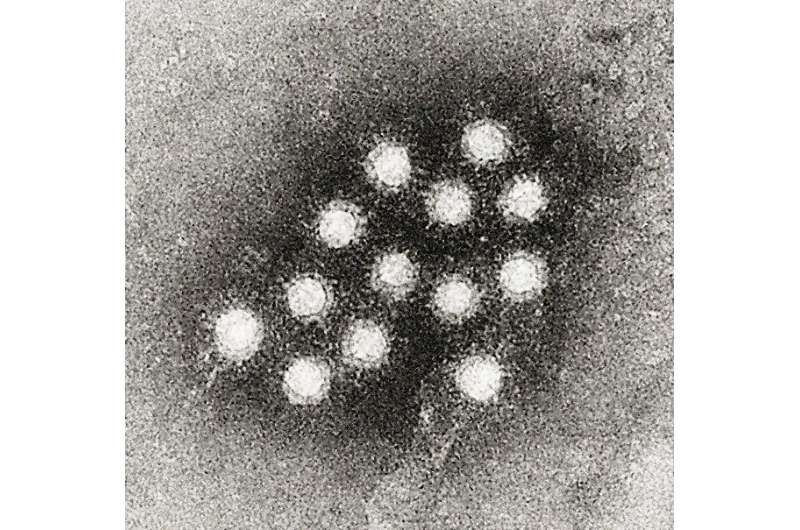The ABCDEs of viral hepatitis

Millions of people across the globe, including in our own backyard, are living with a viral hepatitis infection and may not even know it. Experts at Baylor College of Medicine say awareness and diagnosis is the first step to taking control and making changes to either prevent or treat this potentially deadly infection.
Hepatitis is a generic term for inflammation of the liver whether caused by viral infections, alcohol, autoimmunity, genetic disorders or drug toxicities. If undiagnosed or untreated, it may lead to progressive scarring, known as fibrosis, and risks of cirrhosis and liver cancer.
Viral hepatitis are the Hepatitis A, B, C, D and E viruses. Hepatitis B and C viruses are particularly important causes of chronic liver disease that can result in cirrhosis and liver cancer.
"According to the World Health Organization, viral hepatitis accounts for approximately 1.5 million deaths per year, which is more than those caused by HIV, tuberculosis and malaria. HBV and HCV infections account for more than 90% of those deaths. It is now possible to prevent both hepatitis A and B using safe and effective vaccines, although no vaccines currently exist for HCV or HEV infections. Oral antiviral medications can control HBV infection and cure both HCV and HEV infections," said Dr. John Vierling, professor of medicine and surgery at Baylor.
Hepatitis A Virus (HAV)
HAV is acquired by ingesting contaminated water or food or having close contact with an infected person or their waste. People who live in areas with poor sanitation are more likely to be infected. There is no specific treatment, but the majority of patients recover fully and have life-long immunity afterward. A minority, especially persons above the age of 40, may develop life-threatening acute liver failure requiring a liver transplant.
"There is a safe and effective vaccine to prevent HAV, which is recommended for children ages 12 to24 months. This vaccine is included in early childhood preventative care but is also effective when given later in childhood or adulthood," Vierling said.
Symptoms include fatigue, nausea, diarrhea, abdominal pain, loss of appetite fever or jaundice.
Hepatitis B Virus (HBV)
HBV is transmitted through direct exposure to infected bodily fluids through contaminated needles, sexual partners or between family members. Pregnant mothers may transmit HBV to newborns during birth. HBV can directly cause liver cancer-in the absence of cirrhosis. Currently, antiviral therapies control chronic HBV infections by stopping viral production. Safe and effective HBV vaccines should be given to all newborn infants and unvaccinated adolescents.
"The FDA recently approved a new hepatitis B vaccine. Novel treatments designed to cure, rather than control, HBV infection are in clinical trials," Vierling said. "When undiagnosed or untreated, HBV infection can progress to cirrhosis or liver cancer and require liver transplantation."
Symptoms include fatigue, abdominal pain, jaundice, or dark colored urine.
Hepatitis C Virus (HCV)
As with HBV, HCV is spread through direct exposure to blood or bodily fluids. Like HBV, HCV can be transmitted from a mother to her newborn. Acute infection spontaneously resolves in a minority of people, but the majority develop chronic hepatitis C that usually progresses over many years. Once chronic hepatitis C progresses to cirrhosis, the risk of liver cancer increases. Absence of symptoms often leads to progressive liver damage before a person becomes aware of their HCV infection.
At that time symptoms may include, fatigue, poor appetite, jaundice or dark colored urine, easy bruising, fluid accumulation in the legs or abdomen or bleeding from the intestine.
"The World Health Organization has launched an initiative to reduce HBV and HCV infections by 90 percent by 2030. A global private and public commitment to diagnose and treat HCV infection will be required to achieve this goal," Vierling said.
Hepatitis D Virus (HDV)
HDV can infect only persons with HBV infection, because the HDV life cycle depends on HBV proteins. A dual HDV and HBV infection increases the severity of liver injury and the pace of progression to cirrhosis.
Symptoms are similar to those in patients with HBV infection. Thus, all patients with HBV infection should be tested for HDV infection.
Vaccine prevention of HBV infection eliminates the risk of HDV infection.
Hepatitis E (HEV)
Like, HAV, HEV infection results from ingestion of contaminated food and water. Initially, it led to large outbreaks in developing countries and sporadic cases in travelers to those countries. HEV infection generally resolves spontaneously, however, in pregnant women it can cause acute liver failure and death.
"Subsequently, HEV infection of animals, especially pigs, has increased the risk of transmission by eating undercooked meat," Vierling said. "HEV infection may not resolve spontaneously in people with compromised immune systems."
Symptoms are similar to those in HAV infection. Antiviral medications can cure chronic HEV infection.
"We anticipate seeing more HEV infections in the USA caused by eating undercooked pork," Vierling said.
More information:
For more information on viral hepatitis:
www.cdc.gov
www.who.int/hepatitis/en/
www.liverfoundation.org



















